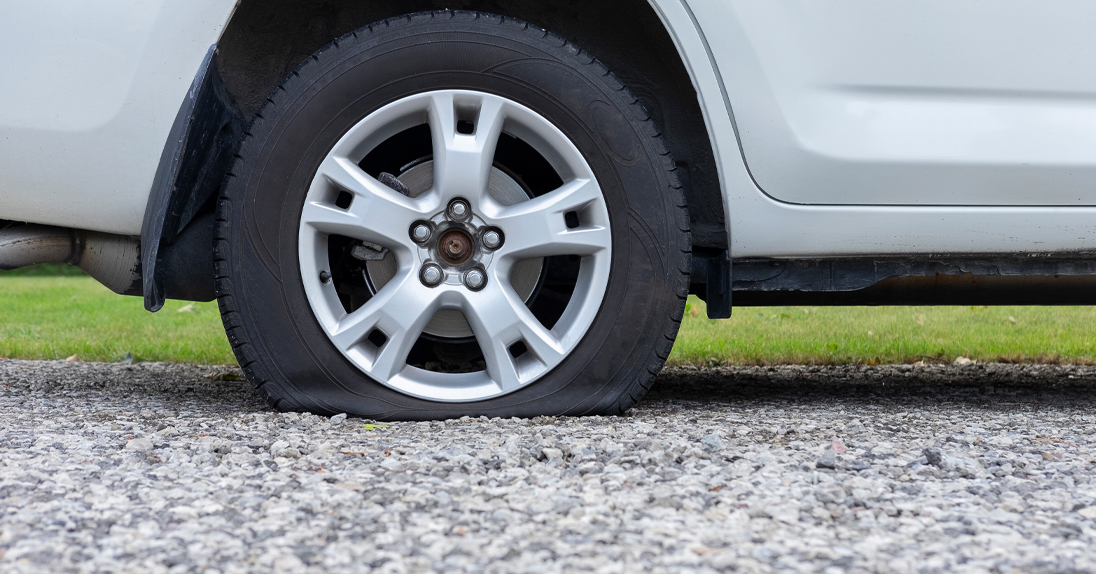In the realm of automotive maintenance. It is essential to never overlook the vital duty of properly inflating your tyres. Yet. The consequences of under inflated tyres on both your vehicles' performance and safety are frequently underrated. In this amiable and informative blog post. We will examine the consequences of under inflated tyres. Explore the hazards they present. And provide you with the knowledge necessary to consistently maintain your tyres at their ideal pressure.
Understanding proper tyre inflation is foundational for ensuring that your vehicle runs optimally and safely. Tyres are considered under inflated when they fail to meet the suggested air pressure levels from its manufacturer - leading to less than optimum air capacity within the tyre's walls which could mean an increase of steering difficulty and handling risks.
Exposure and wear change how much air a particular tyre holds, however a difference - even slight - from the recommended levels can be vastly impactful for safety concerns. Apart from shortened vehicle durability resulting in uneven tread wear which impacts handling; under inflation could also lower overall fuel economy due to an increased rolling resistance caused by reduced tyre stiffness . As a result of this necessary workload increase on your engine , fuel consumption rises ultimately resulting in high running costs of daily usage respectively .

The good news is that you can easily inflate your tyres on your own, without the need for professional assistance. All you need is a few tools and a little know-how. The primary tool you require is a tyre pressure gauge, which is available at most automotive stores. This small device allows you to measure the air pressure within your tyres accurately.
To begin the process, park your vehicle in a safe and level area. Make sure your tyres cool down for safety. Remove the valve caps from each tyre to access the valve stem. Place the tyre pressure gauge onto the valve stem and press firmly to obtain a reading. The gauge will provide you with the current air pressure measurement in PSI (pounds per square inch).
Once you have determined the current pressure, compare it to the recommended tyre pressure specified by your vehicle's manufacturer. This information can usually be found in the owner's manual or on a sticker located on the driver's side door jamb or inside the fuel filler flap. If the current pressure is lower than the recommended pressure, it's time to add some air.
Most petrol stations have air pumps equipped with pressure gauges, allowing you to add air to your tyres conveniently. Insert the air hose nozzle onto the valve stem and press the lever or handle to release air into the tyre. Keep an eye on the pressure gauge while adding air and periodically check the pressure with your own gauge to ensure accuracy. Be careful not to over inflate the tyres, as this can also lead to negative consequences.
Under inflated tyres have a significant impact on both the performance and safety of your vehicle.
Insufficient air pressure in your tyres compromises their ability to provide proper traction and grip on the road. As a result, your vehicle's handling and control are compromised, making it more challenging to navigate corners, respond to sudden maneuvers, and maintain stability in various driving conditions. This lack of control can increase the risk of accidents and collisions. Under inflated tyres require a longer distance to come to a complete stop compared to properly inflated tyres. The reduced surface contact with the road hinders effective braking, increasing the time it takes for your vehicle to halt. In emergency situations, this extended stopping distance can be critical and may lead to accidents or collisions that could have been avoided with adequately inflated tyres.
Your vehicle's fuel efficiency is also directly affected by low tyre pressure. Under inflated tyres increase rolling resistance, meaning the engine has to work harder to propel the vehicle forward. This additional strain on the engine results in increased fuel consumption, reducing your overall mileage and costing you more money at the pump.

The dangers of under inflated tyres extend beyond compromised performance and fuel efficiency. Let's explore some of the significant consequences that can arise from neglecting tyre pressure:
Beyond the immediate safety concerns, under inflated tyres can also inflict long-term damage to your vehicle. Under inflated tyres put added stress on your vehicle's suspension and steering components. The increased workload can lead to premature wear and tear, potentially causing expensive repairs or replacements down the line.
Also, Improper tyre pressure can lead to wheel misalignment, where the wheels deviate from their optimal position. Misaligned wheels can cause irregular tyre wear, reduced fuel efficiency, and compromised handling. Rectifying wheel misalignment requires professional adjustment, adding unnecessary costs to your maintenance expenses.
Many modern vehicles are equipped with stability control systems designed to enhance safety and performance. However, these systems rely on accurate tyre pressure information to function optimally. Under inflated tyres can confuse these systems, leading to reduced effectiveness and potentially compromising your safety on the road.
Maintaining proper tyre pressure is a responsibility that should never be taken lightly. The impact of under inflated tyres on your vehicle's performance, safety, and overall well-being cannot be overstated. By understanding the consequences of low tyre pressure, recognizing the importance of regular checks, and taking proactive measures to keep your tyres properly inflated, you can safeguard your vehicle, enhance your driving experience, and ensure the safety of yourself and others on the road.